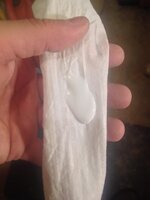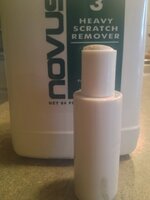Carl Fisher
Member
So I've always gone through 3 of my acrylic pads (micro-mesh but thicker grains) and then jumped to Novus 2. I bought a bottle of Novus 3 to see how much I could shave off the finishing time which is currently about 10 minutes start to finish on each single tube resin piece.
What speed are you using to get the best results? I notice that it dries much quicker applying than the 2 does and I'm not sure at which point to really stop and move on to 2.
Should 3 be able to pick up where 600 leaves off?
etc...
What speed are you using to get the best results? I notice that it dries much quicker applying than the 2 does and I'm not sure at which point to really stop and move on to 2.
Should 3 be able to pick up where 600 leaves off?
etc...


